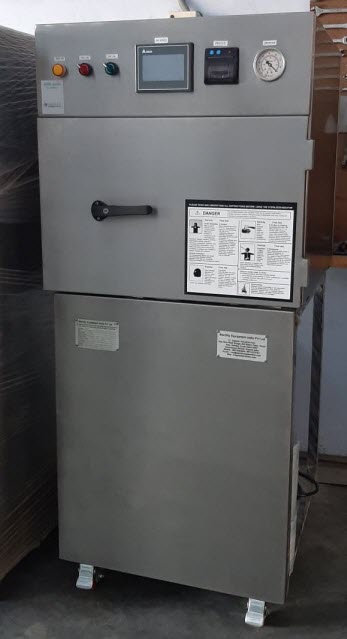One of the most common sterilization methods, ethylene oxide (also known as ETO or EO) is used to ensure that the safety of medical devices remains intact during their usage. During the sterilization process, medical devices are sealed in gas-permeable packages that enable ethylene oxide to enter the packaging and then reach the device inside. If the package is too thick or if there is a lot of paper inside the package, it can hinder ethylene oxide from getting to the device and therefore limit the amount of ethylene oxide that is able to be released during the sterilization process.
This can increase the risk of an unsterilized medical device reaching the patient during treatment, as well as the likelihood that an infection will occur because of cross-contamination from other sources within the facility. For this reason, the FDA encourages device manufacturers to reduce the amount of paper that is included with their devices during production.
In addition to the hygienic and environmental benefits, ethylene oxide is also an effective steriliser of medical devices. Its use in the medical industry has increased significantly, especially with the growth of biotechnology and pharmaceutical companies. Sterilization of reusable medical devices is safe, efficient and cost-effective with EO. Obtaining and maintaining the necessary documentation to support process validation is key.

Provide Employee Training on the Safety of Ethylene Oxide
The sterilisation of medical devices and other high-risk products requires highly accurate processing controls, and an in-depth understanding of the technologies and methods used to validate sterilization effectiveness. Developing, validating and controlling these processes is crucial to a product’s safety and regulatory compliance in the healthcare marketplace.
Using validated processes for all stages of production is critical to achieving the required quality and safety levels in each step of the production cycle, and enables a manufacturing facility to consistently produce a product that meets or exceeds sterile packaging requirements. The sterilisation of all components that may come into contact with the sterile product, as well as the sterilization of a final sterile package, are required by FDA regulations.
A key aspect of ensuring that the sterilization process is effective and reproducible is to validate the sterilisation cycle in a developmental chamber prior to using it in production. This ensures that any changes made to the validation cycle during the actual manufacture of the product will not negatively impact the product’s sterility.
Occupational hazards related to ethylene oxide can be addressed in many ways. The first step is to make sure employees know how to work with this flammable chemical in a safe manner. Educate them about proper ventilation and other controls, as well as the risks associated with exposures.
Employers should also monitor the quality of the air in workplaces where ethylene oxide is used or processed. This can help to detect when a concentration of the chemical exceeds a safe level, enabling the employer to take measures to reduce exposures.





